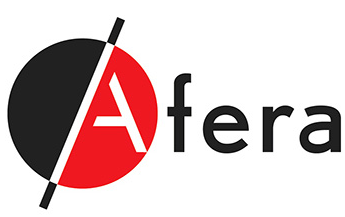
Stick with the basics to succeed with tapes
 Before the advances of science and technology, earthenware pots were patched together using the first glue-type substances, made from either animal material or tree sap. Much later in the 19th century, basic medical advances meant that rubber-based glues were starting to be applied to fabric substrates to keep dressings in place. With World War II came further significant advances with the troops’ requirement of a durable waterproof product to use as a sealing tape for ammunition cases, leading to the creation of the first duct tapes as we know them!
Before the advances of science and technology, earthenware pots were patched together using the first glue-type substances, made from either animal material or tree sap. Much later in the 19th century, basic medical advances meant that rubber-based glues were starting to be applied to fabric substrates to keep dressings in place. With World War II came further significant advances with the troops’ requirement of a durable waterproof product to use as a sealing tape for ammunition cases, leading to the creation of the first duct tapes as we know them!
Today’s wide world of tapes
In our 21st-century society, a world without adhesive tape is impossible to imagine as its usage has spread across every possible market, from technical automotive, aerospace, military and smartcard applications to permeating every part of industrial manufacturing, including restoration and remediation. Tapes are used today for increasingly demanding applications, capable of withstanding huge amounts of pressure and stress, thin enough to be used in passport and credit cards without being noticed, and, with different technical adhesive technologies, used to withstand water, heat, UV, fire and solvents.
Understanding basic adhesive technology
And yet, despite the infinite options of pressure sensitive tapes (PSTs) that are offered, and their widespread usage across industries, user understanding of basic adhesive technology remains limited. This means that taking the time to match the best product to your application is often overlooked in favour of the quick tried-and-tested options users are comfortable with, despite their choice not always being the best tape solution for the application.
A starting point for making a more educated choice is a better understanding of the terminology used in the PST industry, that will further allow users to match the right performance to their application need.
Tack
Many users will revert to a “touch and feel” approach to decide for themselves if the tape is “sticky” enough for them. This performance feature is known as “tack” and is actually the initial “grab” of the PST, a measure of how quickly a bond can be formed. In some applications, surface protection films protect white goods in transit with the adhesive needing to be low in tack, so you can remove it easily while also allowing it to be repositioned.
In other cases, a high tack and stickiness may be desirable for your application for a more long-term application. A potential downside of high tack could be that the material is not so easy to remove and can leave messy adhesive residues.
Clean peel
If a product is claimed to have “clean peel”, it is an indicator that the product can be used short-term and then removed without issues or cleaning, and depending on the application, this can save users much time and effort.
Adhesion
However, this is not the only indicator of the adhesive strength, as most adhesive tapes will increase in bonding power over time, to reach an ultimate bond with the surface to which they are applied. If your ultimate goal is the confidence of long-term bonding to your material, for the lifetime of your application, you will need to consider the adhesion level which is most often presented as adhesion to steel or peel adhesion data, as the industry benchmark testing criteria. Adhesion is the holding power of the adhesive and its resistance to being forced apart after being applied to a surface.
Shear
If, however, your application means that the tape is likely to come under pressure from a different force, then you may want to consider the shear of the adhesive tape. This can be thought of as resistance to being pulled apart in different directions. Products are usually tested in a laboratory, mounted vertically to a material and have a weight attached. The time it takes for the tape to slide off the substrate shows the durability of the bond.
 Rubber-based adhesives
Rubber-based adhesives
There are many different types of adhesives also, each with their own specific properties and uses which determine if the tape can be used permanently, semi-permanently or if it is removable. One of the most popular is rubber-based adhesives which will allow higher-tack, high-bond strength, particularly to plastic surfaces and can be a lower-cost economic option for volume use. However, if you are using the tape consistently in an outdoor environment, you may require low- or high-temperature- or UV resistance. If so, you will need to check that the tape is suitable for this application as the adhesive formulation will need to possess these specific characteristics to allow high-quality performance in this area.
 Storage
Storage
When it comes to temperature, remember too that rubber-based adhesives can be susceptible to temperature variations and will give you much better performance if you keep them at room temperature before applying and whilst using, as a cold tape means a cold adhesive which may not function as per your expectations! That means your usual habit of storing your tapes overnight in a cold van is not advisable!
Surface preparation
The other golden rules of applying your tape include ensuring that the surfaces to which you are applying the tape are clean and dry. Even if your tape is water- or moisture proof, applying directly onto a wet surface will not give the tape the opportunity to bond first, and you need to ensure the bond is not compromised by dirt or solvents too.
So next time you reach out for your usual tape, just stop for a moment and consider if it really is the best tape for the job or whether with a little research, you could find the tape you have always been waiting for!
About the author
Sarah Quilliam has been in the PSA tapes business for over 20 years, working for Scapa Group in both U.K., European and global roles. Initially working in the marketing and distribution side of the organisation, Sarah moved to become a Global Scapa Product Manager in 2006, where she has been instrumental in development, strategy and range management for cloth, PE and aluminium foil tape ranges over the last 12 years, including product launches in the North American market.
About Scapa Group, plc
Scapa is a leading worldwide manufacturer of bonding solutions and adhesive components for applications in the industrial, automotive, cable, construction, graphics, retail, electronics and healthcare markets. They help customers create better products by providing customised adhesive solutions and components for the broad range of markets that they do business in. They design their offering around the requirements of global OEMs, distributors and consumers. The Scapa Polyflex range of PE film tapes are widely recognised as the premier polyethylene tape solution in the agricultural, asbestos/abatement, automotive, construction, marine, military, nuclear, stucco and general industrial markets.
To learn more about how Scapa’s new Polyflex Plus range can support your business needs, visit www.Scapaindustrial.com/polyflexplus or email sales@scapaindustrial.com quoting Polyflex. For more information, please visit www.scapaindustrial.com.
This article was edited and reprinted with permission from Scapa following an insertion in the January 2019 issue of Restoration & Remediation Magazine.

